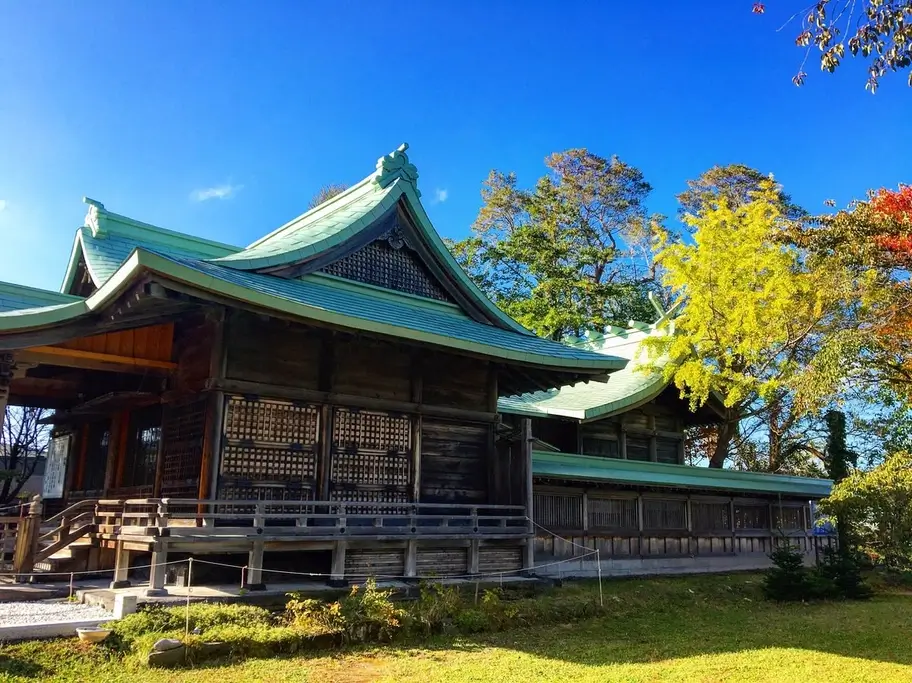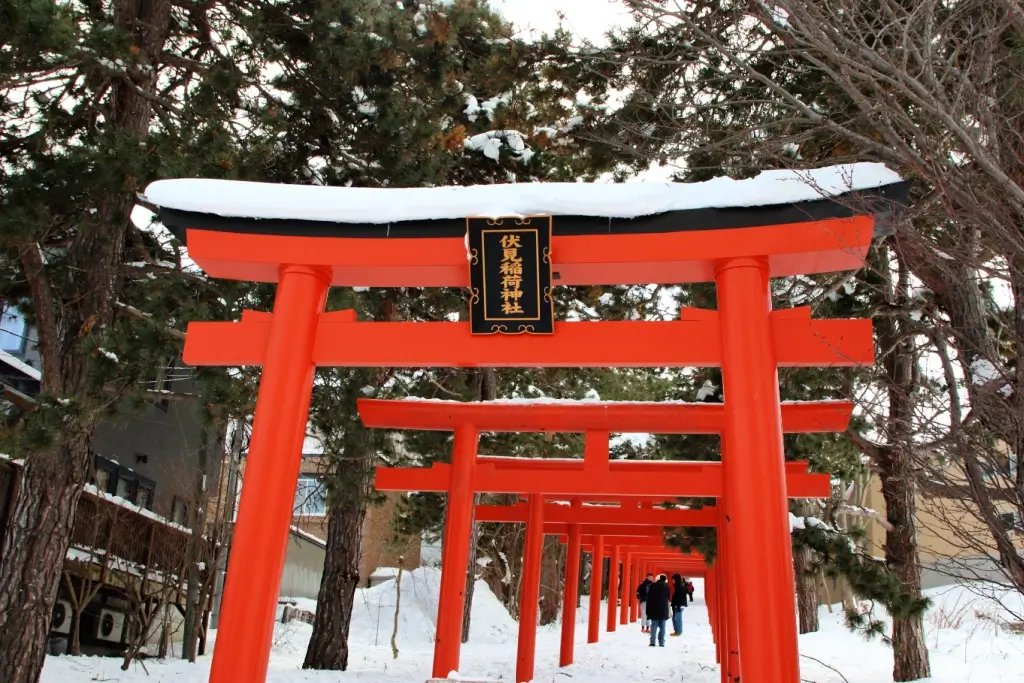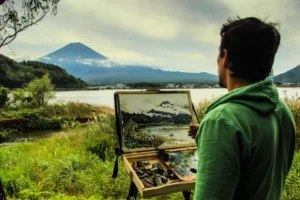With one of the richest histories in the world, Japan’s shrines are an essential part of everyday life. From Sumiyoshi to Hokkaido Shrine, which worshippers visit throughout the year, there are endlessly stunning and meaningful shrines in Hokkaido.
Table of Contents
ToggleSumiyoshi Shrine
Sumiyoshi Shrine, located in Otaru, Hokkaido, is enshrined as the primary guardian deity of Otaru. With a spectacular view overlooking the sea, the Sumiyoshi Shrine, which protects the land of Otaru, is full of attractions! Once up the hill, the grounds of Sumiyoshi Shrine are an excellent place to wander around and enjoy the tranquility. This area also makes for an excellent place to get some photos.

It’s famous for its traditional Japanese architecture, featuring a unique style with straight roofs and simple, elegant lines. Visitors can explore the serene grounds, a picturesque pond, and beautifully Japanese gardens, offering a peaceful retreat. Within the shrine grounds are stone steps lined with a thousand bright red gates. The shrine serves as a place of worship for 350 households and sees special events yearly. During the flower visit period, colorful flowers floating in the water at the temizuya (purification fountain) attract visitors.
Hokkaido Shrine
Hokkaido Shrine is one of the most famous Japanese temples and the largest shrine in the beautiful Maruyama Park. It is a symbol of Hokkaido and draws visitors all year round, from locals to tourists. The expansive grounds also offer a variety of pleasures. From enjoying the seasonal landscapes to taking a break at a teahouse with Japanese desserts, there’s no shortage of activities.

The shrine’s appeal is that you can enjoy the natural beauty of the four seasons. In spring, numerous cherry and plum trees bloom simultaneously, drawing many visitors who enjoy the cherry blossoms. During summer, the lush greenery and bright sunlight create a refreshing atmosphere, allowing you to fully appreciate Hokkaido’s cool summers. In autumn, the stunning golden leaves of ginkgo trees and the vibrant scenery make this region famous for its beautiful fall foliage. To top it off, there is a beautiful blanket of pure white snow in winter.
You can occasionally see Hokkaido squirrels and Ezo red foxes throughout the year, amongst other adorable animals. Many worshippers visit yearly to ward off evil spirits and celebrate new shrine visits. It brings good fortune in business, traffic safety, and matchmaking.
Are you interested in enjoying some delicious snacks from the Hokkaido region? Check out Sakuraco! Sakuraco delivers traditional Japanese snacks, teas, and sweets from local Japanese makers directly to your door so you can enjoy the latest treats directly from Japan!
Biei Shrine
Biei Jinja Shrine is located on the city’s outskirts, about a minute’s drive southeast of JR Biei Station. It was built in 1897 and has unique heart-shaped decorations. Since ancient times, these decorations have symbolized recklessness and protection.

According to legends, these decorations are said to bring luck and love, and they are loved by many visitors. The heart is engraved under the roof in the center of the shrine building. Legend also says that those who find the hidden heart will increase their luck in love. So, the shrine is a trendy spot for couples and lovers.
Suitengu Shrine
Perched on a hill between the sea and the city, Suitengu Shrine is a prominent historical site in Otaru. From its elevated position, approximately 50 meters above sea level, visitors can enjoy stunning panoramic views of the local seaports. The main building, completed in 1920, features three decorative roofs that enhance its architectural beauty.

The surrounding area also reveals the shrine’s historical significance, with magnificent stone walls from the former manor district. Visitors flock to the shrine in spring to admire the beautiful cherry blossoms, making it a popular viewing destination. Recognizing its cultural importance, Otaru City has officially designated the main and front shrine buildings as Historic Structures, preserving this vital piece of local heritage.
Sapporo Fushimi Inari Shrine
Sapporo Fushimi Inari Shrine in Sapporo, Hokkaido, is a branch of the famous Fushimi Inari in Kyoto. Here, 27 beautiful torii (traditional Japanese gates) line up in a row, forming the shrine’s most striking feature. Devotees believe the shrine brings good fortune in industrial development, bountiful harvests, and business prosperity.

In winter, pure white snow contrasts sharply with the vibrant red gates, creating a picturesque scene that attracts photographers. As dusk falls, lantern light illuminates the torii gates, enveloping the shrine in a mystical atmosphere
Why should I visit places like the Sumiyoshi Shrine?
Visiting shrines is an important way to learn about the history and understand the religious aspects of life and culture. Visitors pray for peace, tranquility, prosperity, and health. When you visit, take in each shrine’s history and natural beauty. You will be able to spend a peaceful time surrounded by the beauty of nature in every season.

From shrines with a spectacular view overlooking the sea to unique heart-shaped decorations. These Japanese religious sites are sure to leave quite an impression. Have you visited any shrines in Hokkaido? Do you have one that you would love to visit? Let us know in the comments below!










